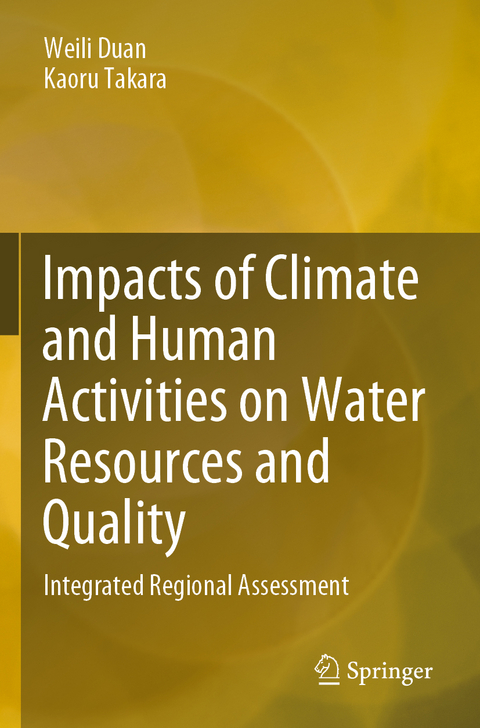
Impacts of Climate and Human Activities on Water Resources and Quality
Springer Verlag, Singapore
978-981-13-9396-9 (ISBN)
Weili Duan is a Professor in water resources and climate change at the State Key Laboratory of Desert and Oasis Ecology, Xinjiang Institute of Ecology and Geography, Chinese Academy of Sciences. Weili pursued a PhD degree at the Department of Civil and Earth Resources Engineering, Kyoto University, Japan. His research interests are water for sustainable development, climate change and water-related disasters management. Kaoru Takara is the dean and professor at the Graduate School of Advanced Integrated Studies in Human Survivability, Kyoto University. He has been contributing to international cooperation research activities through UNESCO International Hydrological Programme (IHP), Asia Pacific Association of Hydrology and Water Resources (APHW), International Association of Hydrological Sciences (IAHS), International Water Resources Association (IWRA), International Consortium on Landslides (ICL), and so on. His research focuses specifically on physically-basedstochastic hydrological analysis.
Introduction.- Extreme Precipitation Events, Floods and Associated Socio-economic Damages in China in Recent Decades.- Changes of Water Quality in the Yangtze River Basin.- Spatiotemporal Evaluation of Water Quality and Water Quality Incidents over Japan.- Assessment of Precipitation Amounts and Climate Extremes in Japan.- Precipitation Changes in Hokkaido and Future Water Resources in Its Main Rivers.- Estimation of Nutrient and Suspended Sediment Loads in the Ishikari River.- The Aral Sea Basin Crisis and Future Water- Climate- Food Nexus in Turkmenistan.
| Erscheinungsdatum | 16.04.2021 |
|---|---|
| Zusatzinfo | 102 Illustrations, color; 1 Illustrations, black and white; XIV, 183 p. 103 illus., 102 illus. in color. |
| Verlagsort | Singapore |
| Sprache | englisch |
| Maße | 155 x 235 mm |
| Themenwelt | Naturwissenschaften ► Biologie ► Ökologie / Naturschutz |
| Naturwissenschaften ► Geowissenschaften ► Geografie / Kartografie | |
| Naturwissenschaften ► Geowissenschaften ► Meteorologie / Klimatologie | |
| ISBN-10 | 981-13-9396-6 / 9811393966 |
| ISBN-13 | 978-981-13-9396-9 / 9789811393969 |
| Zustand | Neuware |
| Haben Sie eine Frage zum Produkt? |
aus dem Bereich


